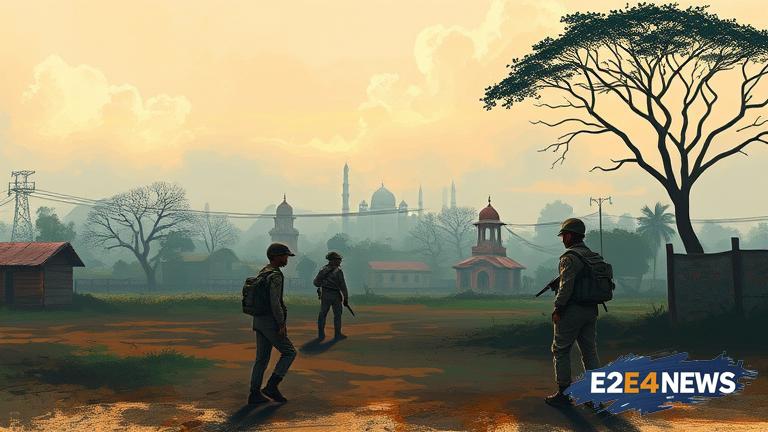India’s internal security landscape is poised to remain dynamic and challenging, primarily due to the country’s neighbourhood. Home Minister Amit Shah recently underscored this point, highlighting the complexities and uncertainties that India faces from its neighbours. The country’s internal security challenges are multifaceted, ranging from terrorism and insurgency to cyber threats and border disputes. The neighbourhood, which includes countries such as Pakistan, China, and Nepal, plays a significant role in shaping India’s internal security environment. Pakistan, in particular, has been a major source of concern for India, given its history of sponsoring terrorism and insurgency in Jammu and Kashmir. The recent developments in Afghanistan have also added a new layer of complexity to India’s internal security challenges. The Taliban’s takeover of Afghanistan has raised concerns about the potential for increased terrorism and instability in the region. Furthermore, China’s growing assertiveness in the region, including its military modernization and infrastructure development, has significant implications for India’s internal security. The India-China border dispute, which has been ongoing for decades, remains a major point of contention between the two countries. In addition to these external challenges, India also faces internal security threats, including the insurgency in the Northeast and the Maoist movement in central India. The government has been taking steps to address these challenges, including the deployment of security forces and the implementation of development programs. However, the situation remains dynamic, and the government needs to remain vigilant and proactive in addressing these challenges. The use of technology, including drones and artificial intelligence, has also become a key aspect of India’s internal security strategy. The government has been investing heavily in these technologies to enhance its surveillance and response capabilities. Despite these efforts, the internal security landscape in India remains complex and challenging. The country needs to continue to evolve its strategies and tactics to address the emerging threats and challenges. The role of intelligence agencies, including the Intelligence Bureau and the Research and Analysis Wing, is critical in this context. These agencies play a key role in gathering intelligence and providing strategic inputs to the government. The government has also been engaging with its international partners, including the United States and the European Union, to address the global dimensions of internal security challenges. This cooperation includes sharing intelligence, best practices, and technologies to address common threats. In conclusion, India’s internal security landscape is expected to remain dynamic and challenging, driven primarily by the country’s neighbourhood. The government needs to continue to invest in its security capabilities, including technology and human resources, to address the emerging threats and challenges. The situation demands a proactive and coordinated approach, involving all stakeholders, including the government, security forces, and civil society. By working together, India can address its internal security challenges and ensure a safe and secure environment for its citizens. The country’s economic development and growth also depend on its ability to address these challenges and create a stable and secure environment. The government’s efforts to address internal security challenges are critical to India’s overall development and growth. The international community also has a role to play in supporting India’s efforts to address its internal security challenges. By providing cooperation and support, the international community can help India to address the global dimensions of these challenges and create a more stable and secure environment in the region.
